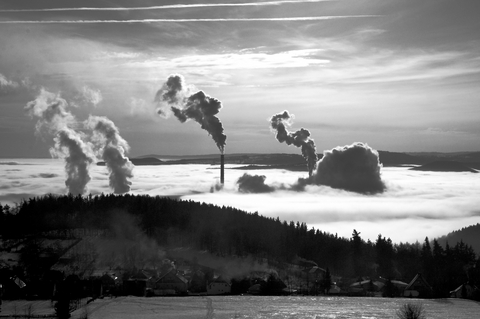 |
 |  |  |  |  |  |  | | | Logiware Ltd.
Unit E2
Bracetown Business Park
Clonee
Dublin 15
Ireland
Phone +353(0)1 8014170
| |
|
|
 |
 |
|
| 
 |
|
CO2
CAST-CO2 for Carbon Emissions Modelling and Optimisation
 Since the early aspirations of the Kyoto Protocol, a significant number of other international initiatives have converged to drive companies towards a greater focus on their carbon footprint. These include the Carbon Disclosure Project which, representing over 300 institutional investors who manage over $50 trillion in investment, requires that the world’s top 2,000 companies report annually on their carbon emissions. Since the early aspirations of the Kyoto Protocol, a significant number of other international initiatives have converged to drive companies towards a greater focus on their carbon footprint. These include the Carbon Disclosure Project which, representing over 300 institutional investors who manage over $50 trillion in investment, requires that the world’s top 2,000 companies report annually on their carbon emissions.
Governments are also beginning to set the agenda with the UK Climate Bill requiring a 60% reduction in carbon emissions by 2050, while in the EU the target is set at a 20% reduction by 2020. These drivers and the increasing adherence to Corporate and Social Responsibility (CSR) policies mean that all responsible organisations will be looking at reducing carbon emissions as an integral part of their supply chain planning process.
CAST-CO2 offers a comprehensive approach, at the supply chain design stage, that enables companies to look at a range of supply chain strategies and configurations that optimise both cost and carbon emissions.
The supply chain is a key area where companies can reduce their carbon footprint, but the bottom line is that over 80% of this target is only achievable at the supply chain design stage.
About CAST-CO2
CAST-CO2 is a module of our leading supply chain design system CAST that calculates the environmental impact of any supply chain modelled in CAST.
CAST-CO2 incorporates industry standard data together with user input to calculate the carbon footprint of a distribution network. The carbon footprint is defined as the CO2 emissions produced as a result of operating the supply chain concerned, taking account of all modes of transportation, including road, rail, air and sea, as well as all types of warehouse operations by country.
Users can see how the future market cost of carbon will influence the optimal supply chain configurations suggested, thereby future proofing the supply chain against rising carbon costs.
The software can also provide a detailed allocation of carbon costs to individual customers or customer groupings. Subsequently, manufacturers can calculate the carbon contribution associated with particular customer accounts, such as individual retailers.
Benefits of CAST-CO2
Companies are able to analyse the carbon footprint of their supply chains and then consider different design configurations and transportation options before making operational changes. For example, a business running its own dedicated distribution fleet could evaluate the cost and carbon impact of switching to alternative fuel sources. Alternatively, a company might review opportunities for consolidation of freight across the network, thereby reducing the number of deliveries as well as the resulting carbon footprint and operating costs.
By optimising the carbon footprint of any supply chain, together with cost and service levels, companies normally find ways to reduce costs and carbon emissions at the same time. In a recent example, a global industrial manufacturer modelled their European distribution network. It identified savings of 9% in supply chain costs and a 28% reduction in carbon emissions by switching significant road freight volumes on to rail and short-sea shipping options across Europe.
CAST-CO2 offers a comprehensive approach, at the supply chain design stage, that enables companies to look at a range of supply chain strategies and configurations that optimise both cost and carbon emissions.
 |
|






















